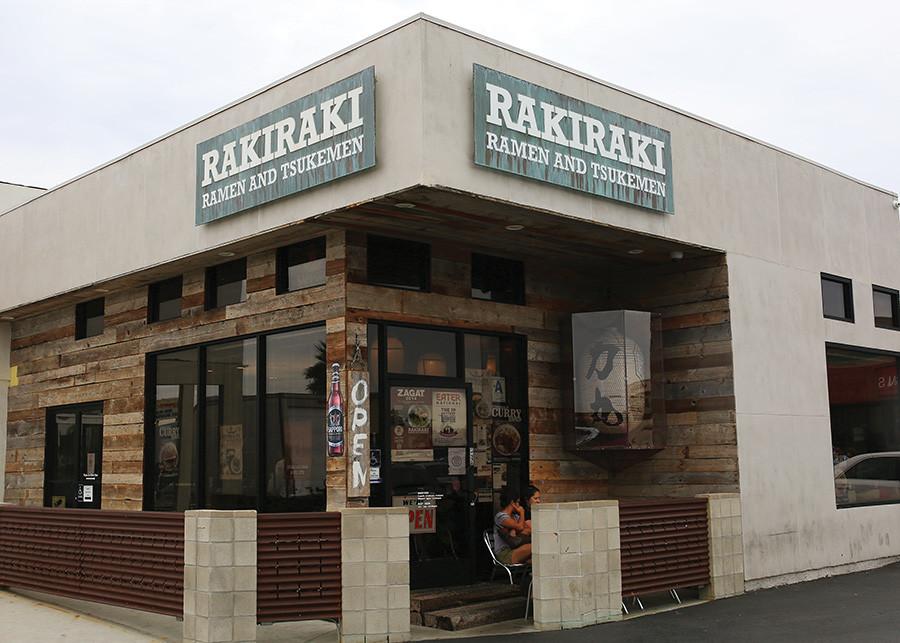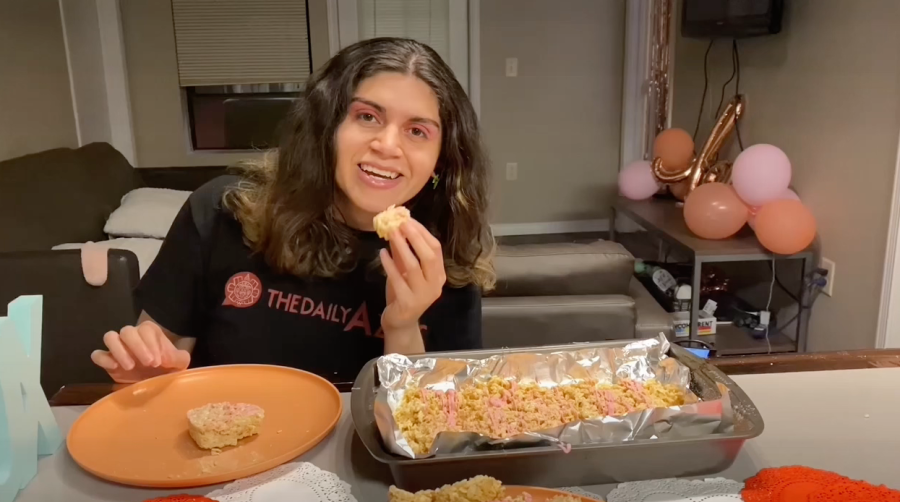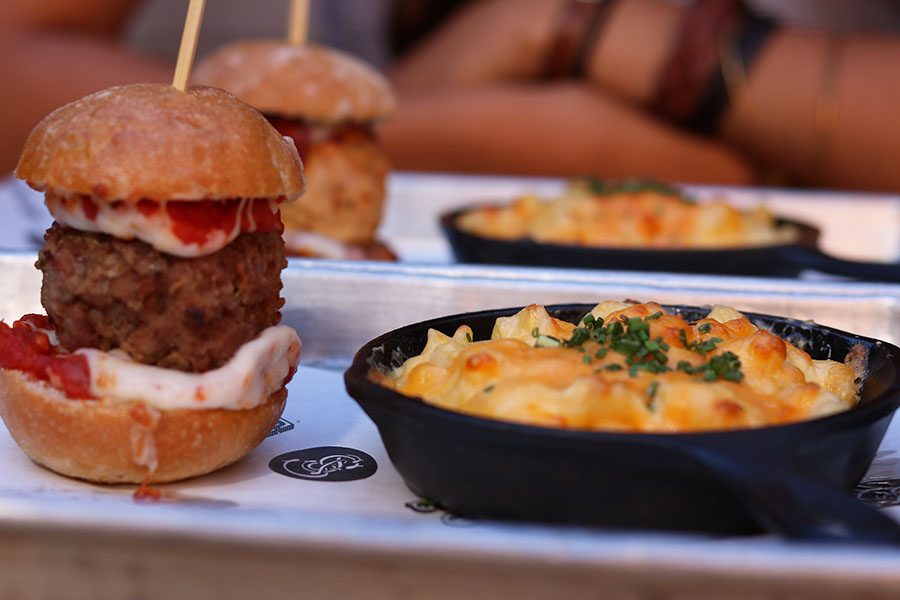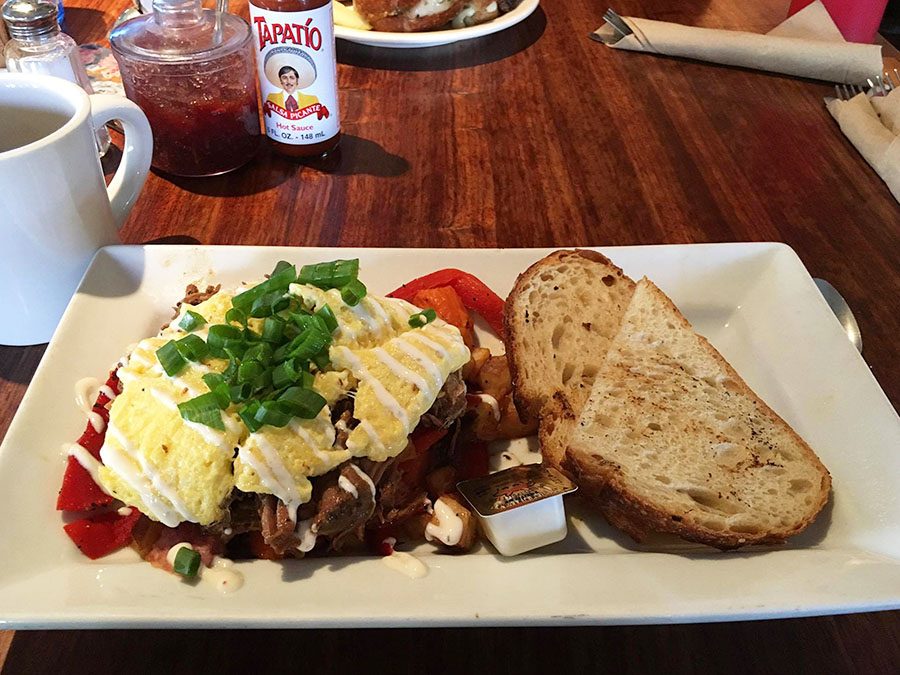People never forget to mention one thing in their typical “broke college student” stories: top ramen. It’s cheap and quick, but unfortunately it’s not the healthiest thing to eat.
San Diego State students can step up their ramen game by going to Rakiraki Ramen, located at the heart of Convoy Street.
Zagat has named Rakiraki one of San Diego’s “hottest restaurants” two years in a row. It also earned a spot on Eater National’s Top 19 Ramen Shops Across America.
The welcoming atmosphere transports patrons back to Japan, where chef and owner Junya Watanabe honed his craft before opening Rakiraki in 2012.
Wood-carved benches and beautiful balloon lanterns add to the aesthetically hip decor, and they offer the perfect set-up for anyone’s next Pinterest or Instagram post.
Economics senior Karen Rai said Rakiraki’s unique environment separates it from other ramen restaurants.
“(It’s) the little things like their decor, from their mason jar water cups to their assortment of ramen, that make (Rakiraki) fun,” she said.
Watanabe has crafted a diverse menu for guests to enjoy, ranging from the traditional to the not-so-traditional. Other than ramen, Rakiraki’s menu features staples of Japanese cuisine, including well-known items like sushi and rice bowls.
The noodles have four primary ramen broth flavors: shio (salt), shoyu (soy sauce), miso and tonkotsu (pork).
Prices of bowls begin at $8 and can go up to $15, depending on the type of ramen, amount of toppings and preferred spices.
The Super Deluxe Hakata Tonkotsu Ramen is a solid choice.
This heftily titled dish includes tonkotsu broth prepared for 12-15 hours by boiling ground-up pork bones before the chef adds Rakiraki’s custom craft noodles.
From there, customers can choose the type of meat they prefer, whether it’s pork (aburi chasiu), chicken (chicken chasiu) or pork underbelly.
Toppings, such as pickled egg, bean sprouts and green onions, are then mixed in to finish the bowl. Those looking to add more heat have the option of throwing some red pepper or chili oil into their dish, which significantly kicks the spice up a notch.
While the Original Signature Ramen features a chicken broth with less toppings and starts at $8, the Super Deluxe Hakata Tonkotsu Ramen extends to about $10.
Between 11a.m. and 3 p.m. from Monday to Friday, the restaurant offers its lunch combo, a sho ramen with a choice of a side rice bowl or sushi roll for only $9.
For the non-traditional ramen eaters, Rakiraki also features tsukemen and ramen burgers.
Tsukemen is a deconstructed ramen bowl. The soup base and noodles are served separately, with the noodles being dipped into the soup.
Now, what is a ramen burger? The creative minds at Rakiraki use the ramen noodles to form a bun to sandwich the different types of meat offered, which also includes a vegetarian option.
Surprisingly, it is Rakiraki’s chicken karaage that earned the restaurant a second consecutive Zagat award.
A starter for any course, the large basket of fried chicken offers guests a juicy yet crisp bite.
The polished environment and reinvented menu make Rakiraki a great location for anybody looking to satisfy a ramen fix.
Students who are in the mood for some quality noodles rather than $1 Top Ramen can count on Rakiraki as a solid alternative.













